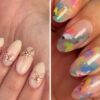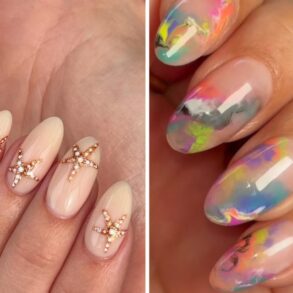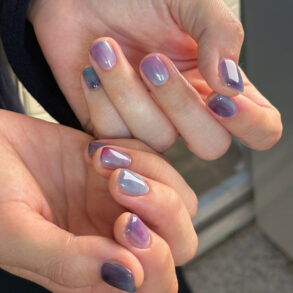Okay, I’ll admit it—I’m a creature of habit and rarely break out of my routine once it’s cemented. So when I come across a beauty treatment that’s been fully embraced by the people I look to in my life for inspiration (whether that be a family friend or content creator with tutorials I swear by) and I end up questioning why I’ve never given it a try, I know I’m probably missing out on something big. When it comes to nails, I’ve always been partial to bimonthly gel manicures with short lengths and neutral colors, but lately I’ve been questioning just how much my nails (and my wallet) could benefit from giving acrylics a try.
And then, of course, there’s the question of acrylic nails versus gel nails. Should I be getting acrylic nails in hopes they last me longer and require fewer visits to the nail salon, or should I be opting for hard gel nails? To get this question answered—as well as a myriad of others—I tapped a celebrity manicurist for the intel on acrylic nails. Here, find all the details you need to know before you schedule your next appointment. Spoiler alert: I’m a changed woman.
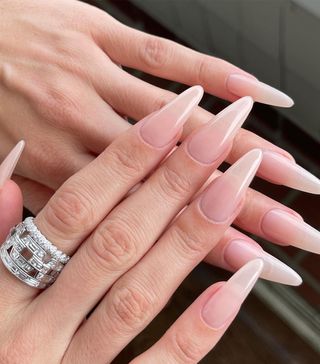
What Is the Difference Between Acrylic Nails and Gel Nails?
Gina Edwards, a celebrity manicurist who, over her career, has been behind several stunning nail looks for everyone from Venus Williams to Bella Hadid, shares that acrylic nails and gel nails differ in their application and upkeep. “Acrylic nails are applied using a powder (polymer) and a liquid (monomer). These two products are used together to create a matte soft substance that’s applied with a natural kolinsky sable brush,” she says. It’s a wet texture that air-dries matte to protect your natural nails while adding natural thickness for a look Edwards refers to as similar to a “Botox boost” for the nails.
Acrylics are also acetone soluble and can be removed quickly within an hour. For an acrylic manicure to remain fresh-looking, routine fill-ins are needed to every two to three weeks depending on how quickly your natural nails grow. Gel nails feature the same thickness as acrylics but are applied in one step. “[Gel nails] come in a pod and look like a ‘gooey’ jelly and can be used with a natural hair brush but a bit denser. This cures in an LED/ UV lamp and holds a great shine upon completion. Hard gels are more of a commitment to the nail game as they are removed through nail growth,” Edwards says.
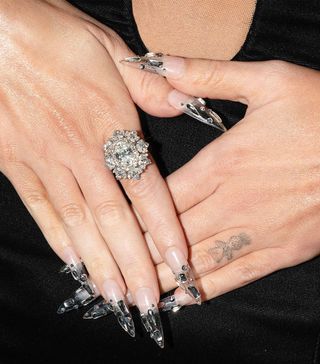



Unlike acrylic nails, hard gel nails aren’t acetone soluble for removal. Instead, your nail tech will drill down the product and fill the nails in with a soft soak-off gel to create nail balance and prevent breakage. Once the hard gel has completely grown out and off of your natural nail bed, she guarantees you’ll have more choices for additional nail care. So before you head to the salon, plan accordingly for the best possible results.
How Long Do Acrylic Nails Last?
As with most popular beauty treatments, the wear time of your acrylic nails will rely largely on how well you take care of them. “Acrylic lasts for as long as you can maintain,” Edwards explains. “However, I normally recommend a new acrylic application after six months to ensure a fresh start from nail tip to cuticle line.” If you’re deciding between acrylic nails or gel nails for your next trip to the salon, be advised that the latter generally lasts two or three weeks depending on how well your take care of them and the rate at which your nails grow, as opposed to the the six to eight weeks acrylic nails can last without peeling or chipping.
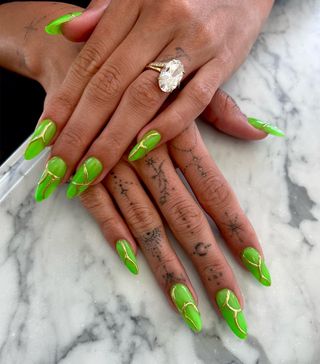



Are Acrylic Nails or Gel Nails Better for the Health of Your Natural Nails?
If you’re wondering how wearing acrylic nails and gel nails can impact the overall health of your natural nails, rest in the knowledge that they’ll both have a similar effect. “Honestly, they are the same in a way. It’s a chemical that is placed on the nails. Whether or not the nail becomes damaged is the responsibility of the nail tech,” Edwards explains. Damaged natural nails can be traced back to a nail tech not taking the right precaution while using products. To keep natural nails healthy with acrylics, start with a base coat to strengthen the nails and seal in nourishment with a moisture-boosting nail and cuticle oil. Also, consider minimizing exposure to water and acetone.
The Pros and Cons of Acrylic Nails
There are a number of pros and cons to think about ahead of getting acrylic nails. Edwards highlights one big pro: Acrylic nails are ideal for individuals who bite nails since they’re more resilient and long-lasting than a traditional nail polish. While there aren’t many cons beyond required upkeep, Edwards does raise the possibility of an allergic reaction to the products used. So if you’re more sensitive to particular chemicals, be sure to test it with your nail tech and keeping an eye out for any sign of irritation around the nail bed.
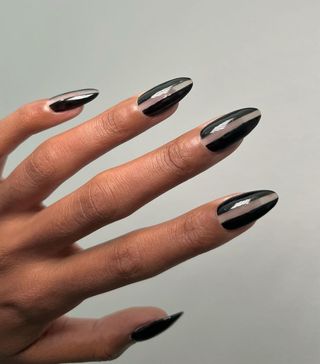



Shop Our Acrylic Manicure Must-Haves
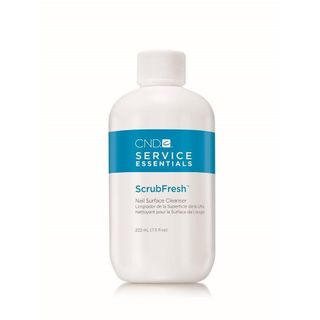



CND
Service Essentials ScrubFresh Nail Surface Cleanser
Consider adding this natural nail surface treatment to your product lineup for your at-home acrylic nail needs. It cleanses and temporarily dehydrates the nail to extend the wear time of enamel and enhancements. It’s a one-step nail everyone should have in their kit.
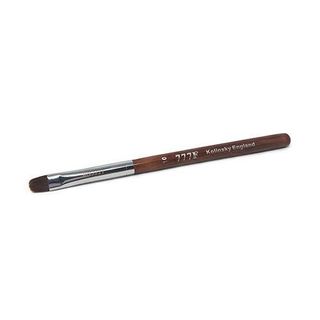



Monika Kolinsky
Nail Art Brush
For acrylic manicures, a brush should be used to apply the blend of polymer and monomer to the natural nails. This brush Monika Kolinsky is designed with a red wood handle and a flat tapered brush made of fine kolinsky hair to offer maximum precision and control during acrylic application.
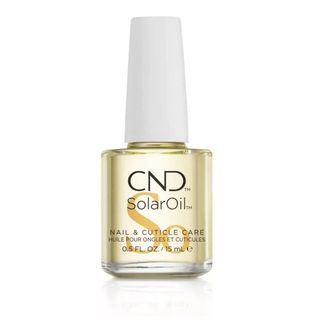



CND
Solar Oil Nail & Cuticle Care
Remember—one of the most positive things you can do for your natural nails while wearing acrylics is to continuously restore hydration. Manicurists and beauty editors agree this nail and cuticle oil is a must thanks to its formula using jojoba, vitamin E, rice bran and sweet almond, and vitamin E.
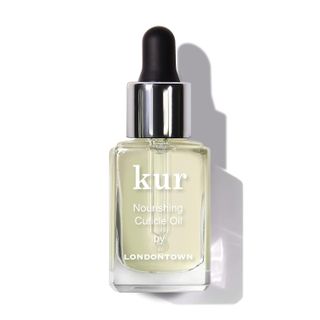



Londontown
Kur Nourishing Cuticle Oil
Time and again, our network of manicurists and nail artists have agreed that using cuticle oil is important for keeping your cuticles healthy before, during, and after the nail appointment. This lightweight cuticle oil has a lightweight florium infused formula using three plant oils for deep moisture.
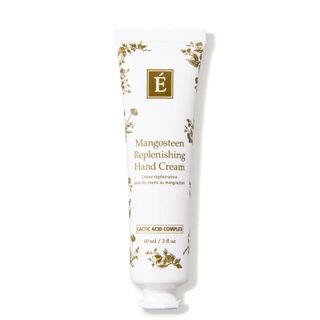



Eminence
Mangosteen Replenishing Hand Cream
This luxurious hand cream delivers instant moisture to the skin with each application. Its silky formula uses a blend of antioxidant-rich mangosteen, lactic acid, red clover flower extract, and more to gently resurface the skin to reveal youthful-looking skin and long-lasting hydration.
This post was originally published on this site be sure to check out more of their content.


